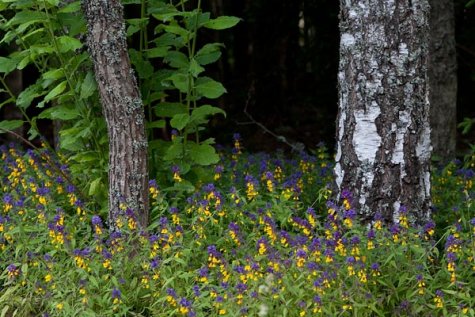Wood cow-wheat
Photo: Arne Ader
Translation:SilverT
Wood cow-wheat blossoming
Wood cow-wheat Harilik härghein Melampyrum nemorosum
This year, on the northern coast of Estonia, wood cow-wheat started blossoming even before Midsummer; here, one of its names has also been Midsummer flower (jaanilill) for that reason.
On the verges of forest roads or in wooded meadows an interesting plant now blossoms with bright yellow flowers. But the common reaction is: violet flowers!
The upper leaves or bracts of the cow-wheat are violet or blue-violet. They are placed in between the flowers and at the tip of the stalk. The bright yellow flowers are hidden by these bracts. The bracts have the same task as the petals in flowers – to make the plant more beautiful and more eye-catching for pollinators.
The plant has no scent, however, bees and bumblebees find something there and pollinate the plant; domestic animals eat it, although wood cow-wheat has very low nutritional value and it is even believed to give cow`s milk bluish color and unpleasant taste. Seeds are even considered to be poisonous.
One more interesting characteristic: wood cow-wheat is a semi-parasitic plant. The roots of the cow-wheat are small and only poorly developed, but their roots have means (haustorium) by which it fastens on to other, stronger plants and takes up part of its necessary nutrients. This can be from larger bushes or from trees. The host plants have a large and well developed root system and don’t mind such "small and temporary thieving”.









